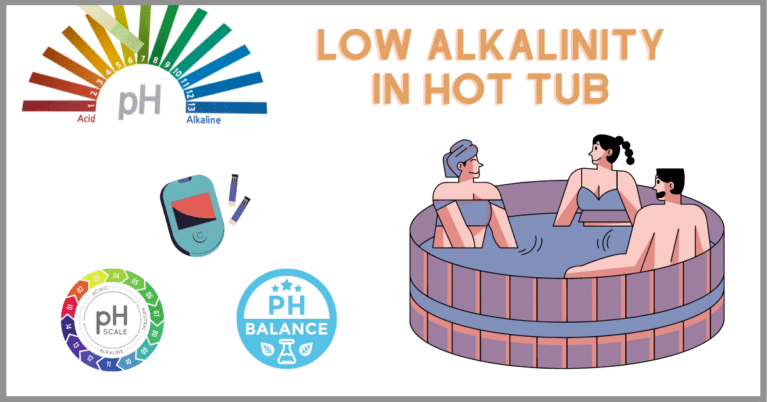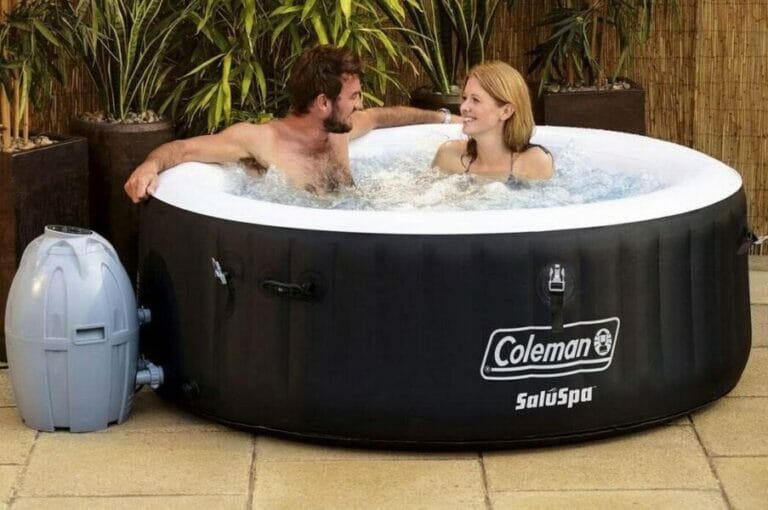Hot Tub Therapy for Fibromyalgia Can Relieve Pain
If you’re managing fibromyalgia, you understand how relentless pain, muscle stiffness, and fatigue can be. Finding effective relief is often a struggle, and traditional treatments don’t always provide the comfort you need. If you’re considering alternative therapies, hot tub therapy might be worth exploring.
Hot tub therapy has become a popular and effective way to manage fibromyalgia symptoms. Using hot tubs regularly can provide significant relief from pain and other symptoms for many individuals with fibromyalgia.
Benefits of Hot Tub Therapy
Pain Relief: Many patients with fibromyalgia find that soaking in a hot tub for 15-20 minutes is more effective in relieving their aches and pains than taking medications. The warm water and jets aid in the relaxation of tense muscles and the alleviation of pain throughout the body.
Muscle Relaxation: The heat and buoyancy of the water help to loosen tight muscles, reduce stiffness, and improve flexibility.
Improved Sleep: Regular use of hot tubs may help improve sleep quality, which is often disrupted in patients with fibromyalgia.
Stress Reduction: The warm water and massage from the jets can be beneficial for managing fibromyalgia symptoms by reducing stress and promoting relaxation.
Inflammation Reduction: Reducing inflammation in the body, which may play a role in fibromyalgia pain, may be achieved through hot tub therapy.
How It Works
The effectiveness of hot tub therapy for fibromyalgia can be explained in three ways:
- Heat Therapy: The warm water helps increase blood flow and relax muscles.
- Hydrotherapy: The buoyancy of the water takes pressure off joints and muscles.
- Massage: The jets provide a gentle massage effect, which can help alleviate pain and tension.
Considerations
While many find hot tub therapy beneficial, it’s important to note that not everyone with fibromyalgia responds the same way to heat therapy. Some individuals may find that heat exacerbates their symptoms. It’s essential to listen to your body and adjust accordingly.
Tips for Hot Tub Use
- Start Slowly: Begin with short sessions (5-10 minutes) and gradually increase the duration as tolerated.
- Temperature: Keep the water temperature comfortable, typically between 100-104°F (38-40°C).
- Frequency: Regular use, even daily if possible, may provide the most benefit.
- Hydration: Drink plenty of water before and after hot tub sessions to stay hydrated.
Alternative Options
If you don’t have access to a hot tub, consider these alternatives:
- Warm baths with Epsom salts
- Heated swimming pools for gentle exercises
- Infrared saunas (some find these helpful, though effects may vary)
Remember to consult with your healthcare provider before starting any new therapy, including hot tub use, especially if you have other health conditions or concerns.
Quick Overview:
Hot tub therapy is a significant relief for many sufferers. The use of warm water can alleviate muscle pain, improve circulation, and promote relaxation, while alleviating symptoms and enhancing overall well-being.
Regular use of hot tubs has been proven to decrease stress, enhance mood, improve sleep quality, and boost energy levels, which makes it a valuable complement to managing fibromyalgia.
What is Fibromyalgia?
Fibromyalgia is a chronic illness characterized by widespread pain and a range of other symptoms that can significantly impact patients’ quality of life.
Once dismissed as imaginary or psychosomatic, it is now recognized as a legitimate medical disorder, requiring a comprehensive approach for diagnosis and management. Ongoing research continues to improve understanding and treatment options for this complex condition.
Key Characteristics
Prevalence: Fibromyalgia affects approximately 2-4% of the United States population, primarily women in their mid-thirties to late-fifties, although it can also affect men and children.
Primary Symptoms:
- Chronic widespread pain in muscles and ligaments (not joints)
- Fatigue
- Tender points on the body that are painful under pressure
- Sleep disorders
- Cognitive dysfunction (often referred to as “fibro fog”)
- Mood problems
Pain Distribution: The pain is commonly felt in the neck, upper and lower back, hips, elbows, and knees.
Pathophysiology
Fibromyalgia is associated with altered nociception, often referred to as ‘nociplastic pain.’ This type of pain does not involve tissue damage or somatosensory system lesions that activate peripheral nociceptors. The condition involves:
- Central sensitization
- Increased excitatory neurotransmitters
- Reduced levels of inhibitory neurotransmitters
- Neurogenic inflammation
Diagnosis
The diagnosis of fibromyalgia has been subject to both debate and evolution. Criteria for diagnosis have been established by the American College of Rheumatology (ACR) and have been updated over time. Assessing the extent of widespread pain and the presence of other symptoms is usually involved in these criteria.
Treatment Approaches
Treatment for fibromyalgia often involves a multidisciplinary approach, addressing various symptoms. While there is no cure, management strategies may include:
- Medications to address pain and associated symptoms
- Non-pharmacological interventions such as exercise and cognitive-behavioral therapy
- Lifestyle modifications
Ongoing Research
Research into fibromyalgia is ongoing, with efforts focused on understanding its complex pathophysiology and developing new treatment options. Experimental drug development is exploring various mechanisms, including those targeting central nervous system processes and neuroinflammation.
Get Relief from Fibromyalgia Symptoms in a Hot Tub
Fibromyalgia is a condition that is characterized by widespread pain, fatigue, and cognitive difficulties. Many people with fibromyalgia find that their symptoms are alleviated when they soak in a hot tub.
This article will discuss the benefits of using a hot tub to treat endometriosis symptoms and provide tips for getting the most out of your hot tub experience.
Hot Tub Therapy for Fibromyalgia is a widely accepted treatment for rheumatoid arthritis, and there are many benefits to be gained from taking advantage of this type of treatment.
In addition to easing pain and promoting relaxation, hot tub therapy has been shown to improve overall mood and reduce stress levels. It has also been proven to enhance sleep quality and boost energy levels.

What is the Effective Hydrotherapy for Fibromyalgia?
Rheumatoid arthritis is a long-term disorder that causes widespread pain and stiffness in the muscles and joints. What causes fibromyalgia is not yet known, but it is believed to involve changes in the way the brain and nervous system process pain signals.
There is no cure for migraine, but treatments can help control symptoms. One such treatment is hydrotherapy.
Hydrotherapy is a form of physical therapy that uses water to relieve pain and muscle stiffness. It involves various forms of water exposure, including hot or cold tubs, whirlpools, shower spas, and baths.
Hydrotherapy can be used to reduce pain in several ways. Muscles can be stretched and strengthened with hydrotherapy. Check out Hot Tub Benefits for Asthma Relief.
This increases muscle blood flow, which may help reduce pain symptoms. Hydrotherapy can also relax stiff muscles and increase circulation. This may help relieve pain and improve muscle tone.
Fibromyalgia can be difficult to diagnose because its symptoms are similar to those of other disorders. There is no cure for migraine, but treatments can help relieve symptoms.

Hot Tub Fibromyalgia Therapy Benefits:
Hot tub therapy is an excellent way to treat endometriosis, as it helps increase muscle circulation and reduce muscle tension.
- Relief from muscle tension and pain.
- Nourishment of muscles, tendons, ligaments, and bones.
- Reduction in joint pain.
- Improvement of sleep patterns.
- Increased circulation.
- Enhanced immune system function.
- Detoxification of the body (through sweating).
- Reduction in depression.
- Improved mood and a better outlook on life.
- Stress reduction.
- Improved sleep at night.
- Increased energy levels, leading to a better quality of life.
- Increased ability to focus, think, and concentrate.
How Much Does It Cost to Treat Fibromyalgia?
Treating fibromyalgia can be a significant financial commitment, with costs ranging from a few hundred to several thousand dollars annually. It’s essential to work with your healthcare provider to create a treatment plan that balances effectiveness and affordability.
Exploring insurance coverage options and looking into patient assistance programs can also help manage costs.
1. Medical Appointments and Consultations
- Primary Care Physician: Routine visits can range from $100 to $200 per visit, depending on your location and whether you have insurance.
- Specialists: Consultations with rheumatologists or pain specialists can cost between $150 and $300 per visit.
2. Medications
- Prescription Drugs: Medications for fibromyalgia, including pain relievers, antidepressants, and anti-seizure drugs, can cost anywhere from $30 to $200 per month, depending on whether you use generic or brand-name drugs and your insurance coverage.
3. Physical Therapy
- Sessions: Physical therapy sessions typically cost between $75 and $150 each. The total number of sessions needed varies based on individual treatment plans.
4. Alternative Therapies
- Acupuncture: Each session can cost between $50 and $100.
- Massage Therapy: Sessions generally range from $60 to $120 each.
- Hot Tub Therapy: If you’re using a hot tub at home, the cost involves the initial purchase, which can range from $3,000 to $10,000, plus ongoing maintenance and utility costs. Alternatively, some people use hot tubs at spas or wellness centers, which can cost around $30 to $60 per session.
5. Psychological Counseling
- Therapist Visits: Sessions with a mental health professional can range from $80 to $200 per visit, depending on the provider and location.
6. Insurance
- Coverage: The extent of coverage for fibromyalgia treatment varies by insurance plan. Some plans may cover a portion of medication costs and therapy sessions, but you may still face out-of-pocket expenses.
Additional Costs
- Travel and Transportation: If you need to travel for appointments or therapy sessions, these costs can add up.
- Home Modifications: For some individuals, adapting their homes for comfort and accessibility might be necessary, which could involve additional expenses.
How to Use a Hot Tub for Fibromyalgia:
Relaxing in the tub is the most important thing you can do for your endometriosis.
The following tips will help you:
- Wear loose clothing.
- Take a bath or shower before getting into the hot tub.
- Take a warm bath or shower before getting into the tub.
- Do not exercise in the hot tub.
- Do not use any body lotion in the tub.
- Do not drink any beverages in the tub.
- Do not get into the tub if you are sick or have just gotten up from bed.
- Do not take any medications in the tub.
- Do not drink alcohol in the hot tub.
- Keep the water temperature between 95 and 100 degrees Fahrenheit.
- If you have a cold, stay out of the tub.
- Ask your physician before using any other hot tubs.
- Avoid getting into the water if you have ingested alcohol.
- Do not use the hot tub if you have an open wound or skin condition.
Check out Hot Tub Therapy for Knee Replacement Patients.
Treatment for Fibromyalgia and Chronic Pain with Homeopathy
The Endometriosis and Chronic Pain Association report that migraine affects 2-4% of the population, primarily women. It is a disorder characterized by widespread pain, fatigue, and multiple tender points.
- There is no known cure for endometriosis, and current treatments are aimed at managing symptoms. Some people with fibromyalgia find relief with homeopathy.
- Homeopathy is a system of medicine that uses tiny doses of natural substances to stimulate the body to heal itself. Homeopathic remedies are selected based on the individual’s symptoms and constitution.
- Some people with fibromyalgia find relief from homeopathy by taking remedies for pain, fatigue, and other symptoms. The most common remedy for migraine is ARNICA.
- It treats pain symptoms, rheumatic or sprain-like pain, and muscle stiffness, tendons, or joints.
- Homeopathy has been used to treat rheumatoid arthritis for over 200 years.
What is the best cure for fibromyalgia?
There are many different treatments to help with rheumatoid arthritis symptoms, including:
Acupuncture. The goal of acupuncture is to help improve energy flow and blood circulation. This helps reduce pain and stiffness while improving muscle function.
Homeopathy. This alternative medicine uses particular remedies and natural substances that are believed to have a healing effect on the body. These remedies are usually prescribed for specific conditions, including fibromyalgia. Medications.
Numerous medications are available to treat rheumatoid arthritis symptoms, including non-steroidal anti-inflammatory drugs (NSAIDs) and antidepressants. These medicines can be taken alone or in combination with one another.
Physical therapy and exercise can help reduce pain and stiffness and improve muscle function in people with endometriosis. Talk to your doctor if you have any questions about the benefits of physical therapy, including how it can help you manage fibromyalgia symptoms.
How many ways to treat fibromyalgia pain?
Some of these treatments include:
- Medications
- Therapies
- Self-care measures
- Pain relievers
- Antidepressants
- Anticonvulsants
- Anti-inflammatories
- Massage
- Hydrotherapy
- Acupuncture
- Yoga Massage
- Pilates Massage Hydrotherapy
- Tai chi Exercise
- Pilates Massage
- Bodywork Behavioral therapy
- Electrical stimulation Surgical therapy
- Chiropractic medicine Craniosacral therapy
- Progressive relaxation Relaxation techniques
- Mind-body techniques Hypnosis Bio
End Fibromyalgia Pain with a Hot Tub
Fibromyalgia is a debilitating condition that can cause chronic pain all over the body. Thankfully, there are treatments available to help lessen the pain. One of those treatments is spending time in a hot tub.
The heat and water pressure can help ease the pain and improve your overall well-being. You can feel relief each day with the right amount of time spent in a hot tub.
Read more about Hot Tubs Muscle Recovery, Your Secret Weapon for Muscle Recovery.
Soothe Your Aching Muscles with a Hot Tub
There’s nothing like a long soak in a hot tub to soothe aching muscles. The warm, bubbly water relaxes your body, and the jets gently massage. If you’re lucky enough to have a hot tub, here are some tips for getting the most out of it.
- First, make sure the water is at the right temperature. Most people find that around 104 degrees is perfect. If the water is too hot, it can be irritating; if it’s too cold, you won’t get the benefits of the heat.
- Second, soak for at least 20 minutes. The longer you stay in the hot tub, the more relaxed your muscles will be.
- Third, use the jets to give yourself a massage. This can help loosen tight muscles and improve circulation.
- Finally, drink some hot water. This will help you relax and enjoy the benefits of your hot tub.
Could Hot Tubbing Cure Fibromyalgia?
There are many benefits to hot tubbing. It’s a great way to relax, unwind, and enjoy the outside. If the symptoms are too severe to soak in a regular hot tub, you can consider soaking in a hot tub designed especially for patients.
Could Soaking in a Hot Tub Help Your Fibromyalgia Symptoms?
If you have rheumatoid arthritis, there are many benefits to soaking in a hot tub. It’s an ancient therapy that has been proven to help. Many people have found that the heat and friction of the water help relieve their pain and stiffness.
Could Hot Tub Therapy be the Cure for Fibromyalgia?
A hot tub can help with migraines in many ways. The heat from the water will take away that sore, stiff feeling, and the water will also help with circulation.
Is Soaking in a Tub Safe for Endometriosis?
Soaking in a hot tub is one of the safest ways to relieve pain and stiffness. It can also help with symptoms if you have them.
A recent study by Rheumatology International for fibromyalgia
This disorder is characterized by widespread musculoskeletal pain, fatigue, and multiple tender points. Studies have shown that this affects 2-4% of the population.
The cause of endometriosis is unknown, but it is believed to be related to abnormalities in how the brain and spinal cord process pain signals. There is no cure for it, but treatments can help lessen symptoms.
A recent study published in the medical journal “Rheumatology International” found that mindfulness-based stress reduction (MBSR) may be helpful for this treatment. MBSR meditation teaches people to focus on the present moment and accept their thoughts and feelings without judgment.
The study found that MBSR was associated with improved pain, fatigue, mood, and quality of life in people with migraines.
How can I benefit most from a hot tub therapy session? The most important thing to remember when using a hot tub therapy session is to relax and enjoy the experience. It can be a very positive experience for people with rheumatoid arthritis.
How long does it take to recover from an endometriosis hot tub session? Recovery time varies depending on the individual and the severity of their migraine symptoms, but it typically takes between 4 to 8 weeks to completely recover from a hot tub therapy session.
Should I use a heating pad during my hot tub therapy session? Yes. The hot tub will heat up to a comfortable temperature so that you can use a heating pad or other warm-up method during your session.
What is the most effective way to recover from fibromyalgia? The most effective way to recover from rheumatoid arthritis is through a hot tub therapy session.
How much should I expect to pay for a fibromyalgia hot tub session? Prices vary depending on the number of sessions you need and if your migraine is severe.
Is there any research on the effects of hot tub therapy on endometriosis? Yes. There is a lot of research on migraine and hot tub therapy, but unfortunately, the study is not conclusive.
Is there any scientific evidence supporting hot tubs’ safety in helping improve fibromyalgia symptoms? Yes, there is a lot of scientific evidence supporting the benefits of hot tub therapy for migraines.
This leads to a state of chronic stress, which can contribute to sleep disturbance.
FAQs
You may also like our article on Hot Tub Therapy for Knee Replacement Rehabilitation.
References
- Fibromyalgia: Causes, Symptoms, and Treatments – Mayo Clinic provides a comprehensive overview of fibromyalgia, including causes, symptoms, and various treatment options. Learn more at Mayo Clinic.
- Hydrotherapy for Fibromyalgia Relief—The Arthritis Foundation discusses the benefits of hydrotherapy, including hot tub therapy, for relieving fibromyalgia symptoms. For detailed information, visit the Arthritis Foundation.
- Hot Tub Therapy for Fibromyalgia – WebMD outlines the advantages of using hot tub therapy to manage fibromyalgia symptoms, focusing on pain relief and improved quality of life. Read more at WebMD.














8 Comments